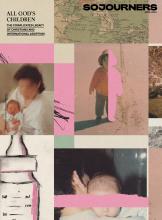IN 1633, THE Bavarian village of Oberammergau experienced a miracle. The villagers had promised God they would stage a reenactment of the passion of Christ if they were spared from the plague. They were spared. Nearly 400 years later, people continue to come from around the world to see these performances. But there’s a problem. Oberammergau’s passion play is one of the most antisemitic artworks in European history. Adolph Hitler viewed the play in 1930 and 1934 and recognized its propaganda value for his own plan of Jewish genocide.
Christians today may still perpetuate anti-Jewish racism throughout our passion narratives — particularly when the gospel of John forms the core of the lectionary. Unlike the others, John’s gospel frequently labels anyone opposing Christ as “the Jews.” Most of us realize that the writer is naming a subset of religious leaders. But when we repeat the phrase throughout Easter, we can subconsciously reproduce and amplify antisemitism found in the Christian theological imagination.
Recently, rather than ignoring the passion play’s antisemitism, the director worked with the American Jewish Committee to rid the play of anti-Jewish tropes. The 2022 Oberammergau passion play told a more complete Easter story. “The Jews” now include Jesus and his followers too. Jesus lifts a copy of the Torah to pray the Sh’ma Yisrael. Hebrew prayers were recited over the Last Supper. Mary is greeted as the “rabbi’s mother.” Significantly, the updated version calls Christians to repent for how we’ve failed our foundational sibling relationship.
Read the Full Article

